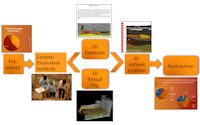
Figure 7: Graphic representation of the classroom assessment project
As mentioned in the introduction, the goal of the 3D application was to teach the basics of archaeological fieldwork and the stratigraphic method in lower-division classes. This goal became the question for a classroom assessment project based on: 1. a pre-survey; 2. training on excavation methods (with the 3D application vs the 2D profile); 3. an ill-defined problem given after the training to test students' abilities after the use of the 3D application; 4. a post-survey (Figure 7). The goal was to assess both direct and indirect evidence of student learning (Suskie 2009, 19-35).
The software was tested with the students in Introduction to Anthropological Archaeology. The class was composed of 120 students, half of whom were freshmen and 20 per cent were declared anthropology majors. Surveys, training and an ill-defined problem were associated with one lecture on archaeology and the excavation process. An optimised version of this study would include several 3D activities to build familiarity and further skill sets. The following are preliminary findings.
The pre-survey was conceived as a formative assessment (Suskie 2009, 24) aimed at understanding the students' background knowledge in archaeology, their familiarity with 3D and how they valued the effectiveness of visuals and hands-on activities for learning, compared to other learning techniques such as textbooks, notes, and listening to lectures. The formative assessment is focused on the students learning process and helps teachers to assess teaching activities in order to improve how students learn. The pre-survey was based on a multiple choice, Likert rating scale and open-ended questions (Suskie 2009, 137-54), and these scales were always used in conjunction with the open-ended question "why?", to assess the students' honest considerations on the topic (see Appendix 1).
The results of the pre-survey helped to implement both the design of the lecture on fieldwork and the stratigraphic method, and the following training and ill-defined problem on stratigraphy. The lecture combined diverse learning techniques: fieldwork was explained using videos and pictures taken at Çatalhöyük representing students at work, the excavation area, the tools used to excavate, all lab activities carried out by students and professionals every day after the excavation, and the digital lab made up on site and the devices used to do the 3D digital data collection of the excavation. The stratigraphic method was explained using traditional profiles of excavation areas and fragments from Principles of Archaeological Stratigraphy (Harris 1989). At the end of the explanation some students were asked to go to the white board, recognise and number layers from a 2D stratigraphic profile, and create a matrix from it.
After the lecture, during the discussion sessions, students were divided into two groups: A. 3D group (60 students); B. 2D group (60 students).
1. The 3D group was given 40 minutes to work with the 3D application.
2. The 2D group was given 30 minutes to create a matrix from the 2D profile of the same stratigraphic sequence used for 3VD; after 30 minutes they were given 10 minutes to check the key of the assignment, containing an explanation of the stratigraphic relationship between the various units (same text used for 3VD; see Appendix 2).
After the training, the students' preparation was tested using an ill-defined problem (see Appendix 3). All students (2D and 3D groups) were provided with a 2D profile of a stratigraphic sequence, and asked to answer multiple-choice and open-ended questions about the relationships between the layers in the stratigraphy and create a matrix based on the sequence.
The success or otherwise of dealing with the problem provided direct evidence of student learning. To collect indirect evidence of student learning, after the students completed the ill-defined problem they were asked to provide feedback on their learning experience by completing a survey (see Appendix 4). Like the pre-survey, the post-survey was designed using multiple choice, Likert scale and open-ended questions. This assessment could be used by the instructor of record to formulate an appropriate response in order to improve learning in her class, and were conceived by us as a summative assessment (Suskie 2009, 24) of the 3D application vs the 2D exercise, and the complementary activities (lecture on stratigraphy, ill-defined problem). The assessment summarises students' achievements after the activities. In this case, the survey was designed to test and assess the application effects on teaching and learning.
© Internet Archaeology/Author(s)
University of York legal statements | Terms and Conditions
| File last updated: Wed Dec 12 2012